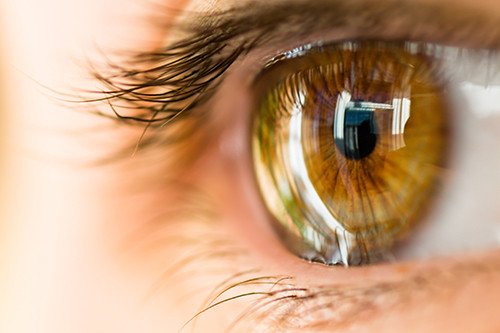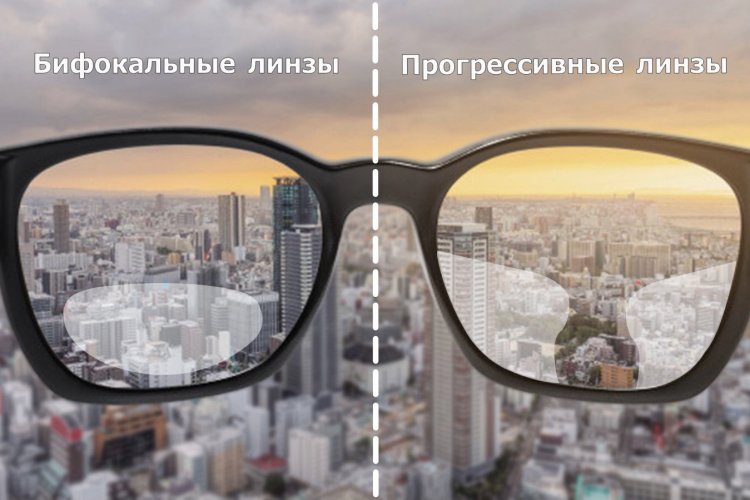Sight is one of the most important senses for humans. People receive over 70% of information through visual contact. We make out colors, shapes, see where we move to and what we do – all this plays a major role in all our lives. Unfortunately, many people neglect their eyesight and fail to use preventive methods that may preserve the quality of their vision for many years. People go to see ophthalmologists and oculists only when they experience vision problems.
According to the Russian Federal State Statistic Service (RosStat), about half of the Russian population wear glasses or contact lenses to improve their vision. Some people also go for optical vision correction. RosStat conducted a survey in 2020 and found that around 40.8% of men and 56.7% of women among the respondents wore glasses. For Moscow and Saint Petersburg, these percentages were 36.4%/51.0% and 44.0/50.3% respectively. These are high numbers. Myopia, hyperopia and astigmatism are the three main vision disorders. To avoid serious vision problems, one should do preventive eye exercises. Such exercises, of course, are better suited for those without vision problems or those who just experience minor discomfort.
Eyesight exercise method by the American ophthalmologist (Bates method to recover eyesight):
1. Look up and down several times. Move your eyes smoothly and slowly. This is a warm-up exercise.
2. Keep moving your eyes, but this time – from right to left.
3. “Diagonals”. “Draw” diagonal lines with your eyes. For example, look at the upper left corner, and then shift your gaze smoothly to the lower right corner. Use your imagination during the exercise: don’t just shift your eyes, imagine those lines. Repeat several times, then blink for 15 seconds.
4. “Rectangle”. This exercise is based on the same principle: you are “drawing” a rectangle with your eyes. After the first rectangle, start another one, but move your eyes in the opposite direction. Blink for 10 to 15 seconds after the exercise.
5. “Clock dial”. Imagine that your face is a clock dial and its center with the hands is on your nose bridge. Move you gaze over the imaginary numbers: 12 o’clock, 3 o’clock, 6 o’clock, 9 o’clock. Repeat several times, then blink and repeat in the opposite direction. Stop your gaze at each number, and move your eyes smoothly and slowly.
6. “Snake”. “Draw” an undulating line with your eyes from the lower right towards the lower left corner, then blink and repeat the exercise in the opposite direction. Do the “snake” several times.
7. “Infinity” or “Number Eight”. Your eyes have to “draw” the infinity symbol or the number eight lying on its side. Start from the upper right corner and move your eyes smoothly while imagining the shape you are drawing. Blink and do the exercise in the opposite direction, i.e. starting from the upper left corner.
8. “Spiral”. “Draw” a spiral, from the central point to the outer circle. Move your eyes smoothly and slowly. Finish the exercise when the last circle has reached the limits of your field of vision.
9. “Coil”. Imagine a vertical pipe before you. The task is to “wind” an imaginary rope around the pipe with your eyes. Do five turns in one direction and stop. Blink and start “winding” the rope in the opposite direction – five turns as well.
10. “Globe”. The last exercise will help you relax eye muscles after the “workout”. Spin an imaginary globe in your mind, fixing your gaze upon the equator. Slowly follow the equator line with your eyes as the globe spins.
William Bates also recommended combining his exercises with breathing gymnastics. He believed that to be the only way to release the nervous tension that caused the vision problems. This set of exercises can be done up to 3 times a day, though specialists say once a day is enough to exercise and relax the eyes.
When were the world’s first eyeglasses invented?
In the 1st century of the Common Era, Nero, the 5th Roman Emperor thought of using an emerald to zoom in the gladiatorial fights. What he saw through the stone was not very sharp, of course, so the device could not compare to a quality pair of glasses, but it was a good idea at the time.
In 1299, the Italian inventor Alessandro di Spina invented “eye lenses”, made of rock crystal and beryl. Later, people started linking the lenses together. Since the glass lenses were highly convex, they were meant for farsighted people. In 1451, the German philosopher Nicholas of Cusa publicly presented his invention – concave lenses for eyeglasses, designed for myopic people. In 1785, Benjamin Franklin, the creator of the first bifocal eyeglasses, combined two lenses with different properties in one glass (the upper part – for myopia, the lower part – for hyperopia). Thus, the wearer could use the upper part to read and the lower part – to view things at a distance. What types of modern glasses are there?
Glasses with bifocal and progressive lenses
Bifocals are meant for people who are both myopic and farsighted. Such glasses enable people to see better in two areas: the closest and the farthest. Their only weakness is the fact that they have thick lenses and are not very comfortable to wear on a daily basis.
Progressive glasses are a type of multifocal glasses since the wearer can see clearly things that are close up, things that are far away and thinks in the intermediate optic zone, which is not the case with bifocals. The difference between the near and distant zones may be 2 to 3 diopters, but there is the so called “progression channel” between the zones, which ensures clear vision at medium distances. The optic power in the intermediate segment changes gradually, removing the visual discomfort from shifting the gaze, known to those wearing bifocal glasses. These are the most common types of glasses for everyday wear. Now, contact lenses are common as well as glasses. Many people think that contact lenses were invented in the early 21st century while in fact their history dates far back into the past.
The world's first contact lenses
The history of contact lenses started in 1508, when Leonardo da Vinci made a few drawings of the future invention and a public demonstration of how the lenses would work. But the public failed to appreciate the scientist’s efforts. At different times afterwards, European physicists and astronomers continued developing da Vinci’s idea, now as a hand magnifier, now as a cylinder-shaped device. And only in 1823, John Herschel of Great Britain came up with the idea of a corneal lens to be worn on the eye itself. Herschel called it an optical capsule and suggested that some gel-like material could be used to produce it. In 1920, the German physicist Friedrich Müller improved the previous ideas, and Carl Zeiss started manufacturing his contact lenses. Those were haptic glass lenses (covering the entire eye). Corneal lenses would, sadly, fall out of the eye. Glass is glass: it is hard and uncomfortable. So the search for a soft biocompatible material went on. A while later, the Czech scientist Otto Wichterle invented НЕМА – a hydrophilic polymer that allowed oxygen to pass through. The latter is especially important. The cornea lacks blood vessels, so it gets oxygen required for normal metabolism from the air. Oxygen deficiency in the cornea causes deterioration of the superficial epithelium and vascular invasion. Wichterle tried his invention on and was pleased: the lenses were soft and easy to use. He patented the material; mass production of the lenses ensued. The first silicone hydrogel contact lenses became available in 1999. It was a real breakthrough. They were called breathing lenses since their air permeability was much higher than that of hydrogel lenses. Hydrogel lenses cannot be worn for more than 8 hours, while those made of silicone hydrogel instantly became popular with people that tend to always wear their lenses. There is a large variety of contact lenses on the market – for any age. But contact lenses keep improving. In the near future, we can safely expect self-cleaning lenses or 100% breathing biocompatible materials. We ain't seen nothing yet! As for the choice between glasses and contact lenses – it’s a personal choice. According to ophthalmologists, the final decision as to which method of vision correct to choose will depend on a number of factors:
- Preferences of the customer;
- Contraindications to wearing contact lenses;
- Particular characteristics of the customer’s vision and the state of the eyes.
In addition, specialist point out that, in the absence of contraindications, it is better to combine glasses and lenses. This would allow vision correction without distortions. The main thing is to see better!
Sources:
Who and when invented the world’s first eyeglasses
The main causes of vision problems
Bates method to recover eyesight
Contact lenses: from a sphere filled with water to a breathing polymer
Source of images in the text – Lenses and glasses
Source of the image on the main page – How were eyeglasses invented?

























